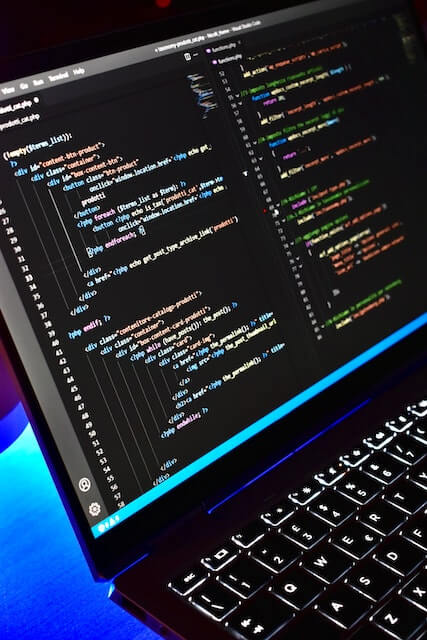
Overcoming the Fears of Hiring an Offshore Development Team

Offshore software development teams have become an increasingly popular strategy for companies looking to tap into global talent and increase their efficiency. As a company that’s been operating in the field of offshore development in Ukraine, Eastern Europe, and Latin America since 2008, we are well aware of potential concerns and fears North American companies may have when it comes to implementing this strategy. Let’s begin!
Time zone differences will bog my project down
Imagine the situation: You’re a tech leader based on the West Coast and want to strengthen your core project with an offshore development team. The only thing that stops you from moving forward with this strategy is the fear that your offshore and onshore technology units will be out of sync, given that by the time the day begins on the West coast, your offshore software development team may have gone offline. You fear that such a scenario may lead to a serious misalignment in communication and cooperation between the teams.
Despite all the benefits that come with offshore software development teams, time zone mishaps remain the main concern of many US companies. We can’t state that this fear is irrational. Working through time zone blockers is challenging, as you need to come up with a well-rounded game plan to synchronize your onshore squad with your offshore development team. However, if you take the right approach, you’ll create a way to ensure that you have continuous coverage, thanks to your two teams, working 8 hours each across the globe.
Keep in mind that it’s possible that your offshore software development team will actually prefer working non-standard working hours. In fact, a lot of developers in Ukraine while working for foreign clients prefer to start their workday in the afternoon, catering to the needs of their offshore counterparts. This means that you can hold your daily meeting at 10 am Pacific Standard Time and it will be 6 pm for your Ukrainian offshore development team, which allows a decent time window for communication and daily progress reports from your Ukrainian developers.
Many Western companies work successfully with offshore development teams after having minimized the impact of time zone differences. One example is Encore Capital, a company based in California. We partnered with them in 2017 to provide an offshore dedicated team consisting of a Project Manager, Business Analyst, backend, web, and mobile developers, as well as UI/UX and Quality Assurance experts. Working through nCube as a vendor, the company has been successful in building a strong connection with their distributed unit despite the time zone.
READ ALSO: How to Build an Offshore Software Development Center
My offshore “dedicated” team won’t be “dedicated”
Here’s another scenario that may keep you up at night: You are a startup owner and seek an offshore development team to build a product from scratch. Not only do you need a team that will be fully dedicated to your project but also want to hire one that will share your passion, vision, and goals. Such a project obviously requires the highest levels of dedication from your offshore development team.
You may be under the impression that it’s impossible to have an offshore dedicated team when you don’t get to share the same office. Allow us to bust this myth. Starting with the initial candidate screening, we pay utmost attention to selecting team members who will be a good fit for both your company and remote work model. To that end, we prioritize the client’s idea of an ideal candidate and sift through the local IT job market in search of offshore development team members that will meet your demands to the fullest. We specifically handpick self-starters and specialists with experience working remotely, qualities that make a perfect dedicated team member. We at nCube believe that it’s the only way to build the best offshore development team.
Moreover, we provide developers who will work for you (and only for you) on a full-time basis, Monday through Friday, which lends itself to the concept of an offshore dedicated team you can count on.
READ ALSO: How to Manage Your own Dedicated Development Team
An offshore development team won’t be worth it budget-wise
Let’s say, you have a budget for a project. Full of enthusiasm, you roll up your sleeves getting ready for hard work, and hire an offshore development team through a vendor. After several months, your budget begins to thin out, but the results are way below your expectations.
For a tech leader, a scenario like this is probably scarier than all Halloween movies combined. Here’s what you can do to avoid it.
When choosing an offshore development team vendor, it’s critical to analyze the market and pricing. Compromising between the price and quality can lead to meager results, as they will be produced by a team with poor qualifications and communication skills. The rates of Ukrainian developers we provide warrant their quality of work, the experience and the problem-solving mindset they will bring to the table. We can provide specialists who have vast experience in working in offshore development teams, speak English confidently, and have well-rounded communication skills. With such a team, you stand a good chance to build a product that won’t disappoint your stakeholders and investors.
READ ALSO: Advantages and Disadvantages of Offshore Software Development Services
I won’t find common ground with my offshore software development team
Despite a cross-border culture that dominates the IT field today, you will inevitably encounter some cultural differences, as people from different cultures see certain things differently. For example, you may notice that some members of your international teams tend to focus on positive sides and prefer to sugarcoat things, while others find value in hard-hitting criticism. This contributes to the fear of many IT leaders – your team members won’t be on the same wavelength culture-wise, which in turn will impede the process of software development.
We can’t say that this fear is groundless, but certainly, it’s possible to keep the monster of cultural differences at bay. For example, we at nCube source developers with an English level of B2 (Upper-intermediate) or higher. This means that each engineer operates at a level where they can communicate easily, spontaneously, and in a clear and detailed manner.
When it comes to communication, we also source developers with a proven track record of being part of offshore development teams, which helps them understand and find common ground with North American companies. Adapting to another culture can also be a great way for you to become more engaged with your team as you can also help by arranging thematic meetings where people can gain insights into each other’s culture.
READ ALSO: Taking your Big Data Offshore: Why You Need an External Big Data Team
I won’t know who is really working on my project
We perfectly understand this fear and practice an approach that helps companies always stay in the know as to who is working on their project. We believe that the only way for you to know who is going to work on your project is by personally approving your offshore software development team members and fostering a culture of transparency. After we select a pool of relevant candidates and pre-screen them for tech skills, English proficiency, and culture fit, you are welcome to interview each candidate yourself and approve or decline them.
Thus, in our model of offshore software development teams, you’ll find value in a customized team formation process that allows you to handpick team members. Therefore, you can provide your candidate description and share any details you believe may help us source the right kind of talent for you.
On our end, we will take care of people who you have handpicked through us, and make sure they remain part of your team for the long haul. To keep team retention soaring high, we provide solid employee bonuses, HR and accounting support, motivational programs, insurance and take care of team happiness overall.
I won’t know what my offshore development team is doing
We believe that a software development process is akin to building a house. With that in mind, our model of an offshore dedicated team allows clients and their tech leaders to have direct access to developers. While most of the work is done by contractors, your involvement in the construction is absolutely necessary, as it’s you who should own the processes and check in on the progress and direction in which the construction is moving. This all means that you will benefit from communicating with and managing your offshore development team as you see fit, and build the “dream house” you desire.
Additionally, within our model of an offshore dedicated team, you’ll be able to establish a reporting system, which will enable you to receive daily/weekly/monthly reports on team members’ accomplishments. This way, you will retain full control over your offshore development team, correcting the direction in which it goes, helping them get closer to meeting your goals and expectations.
READ ALSO: Guide to IT Team Augmentation vs. Managed Services Comparison
Team formation will take a lot of time
We understand that you may be eager to create a team quickly team and hit the ground running with your project. Don’t let this fear hold you back from hiring an offshore development team. Building an in-house team can take time and resources, but offshore hiring is more flexible and covers a larger pool of talent. For instance, we focus on several offshore hubs that have over 2 million software developers combined, including Central & Eastern Europe and Latin America. Such a focused approach streamlines the team formation process, making it more targeted and efficient, which ultimately accelerates its speed.
Once you provide us with your project specs and the roles you need, we will put our HR team to the task of searching for fitting talent. With our streamlined candidate search process, it takes 2-4 weeks to create a standard team, and you can expect to meet the first candidates within the first week after our initial call.
READ ALSO: Offshore Product Development: Eastern Europe, Latin America or Asia?
I have low trust in remote employees
Trust is a critical factor to consider when working with an offshore dedicated team. We perfectly understand that initially, it can be challenging to trust team members located across time zones from you. You should know that our clients have successfully built such relationships with offshore development teams in Ukraine, which have in return become a valuable addition to their internal teams.
A no-middleman approach plays a significant role in establishing trust with your offshore dedicated team. At nCube, clients can personally interview candidates and communicate with their hires directly at all stages of the process. This includes managing the SDLC personally, assigning team roles and tasks, and monitoring the progress. We also offer the option to add a project manager who will communicate with you on behalf of the team.
If your concern is irrelevant candidates, we will provide you with all information about them, including their CVs, portfolio, experience, background information, and more. You can review the information and decide whether or not you want to add a candidate to your team. Moreover, we will screen all candidates before you meet them (including tech and company fit interviews), so the fear of working with incompetent developers is off the table.
When the offshore team is supported by both you and the vendor, the degree of trust increases. The vendor has a dedicated team on their side to communicate with developers and mediate any issues and concerns. With a provider like nCube, you can trust your developers. We have all the necessary processes in place to ensure this is a lasting and fruitful cooperation.
Hire the best offshore development team with nCube
Hopefully, we’ve helped you overcome most of the fears (if not all) related to building an offshore dedicated team. We believe that the model we have introduced you to in this post brings the best value and profit to our clients and ensures that our clients have peace of mind when it comes to working with offshore development teams. Contact us to discuss our approach to building an offshore development team in Ukraine, Central & Eastern Europe, or Latin America.
Recommended articles


